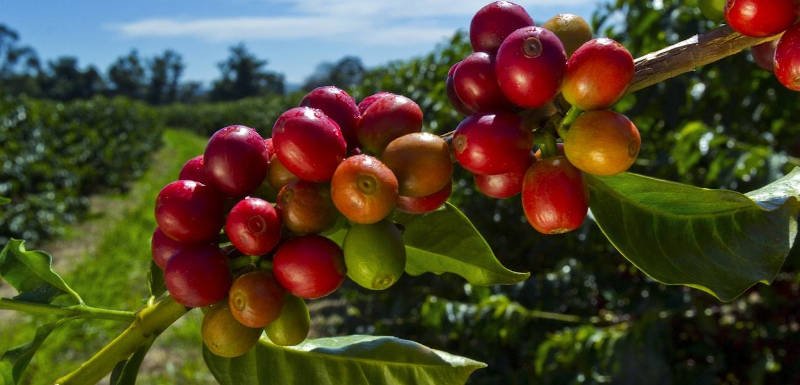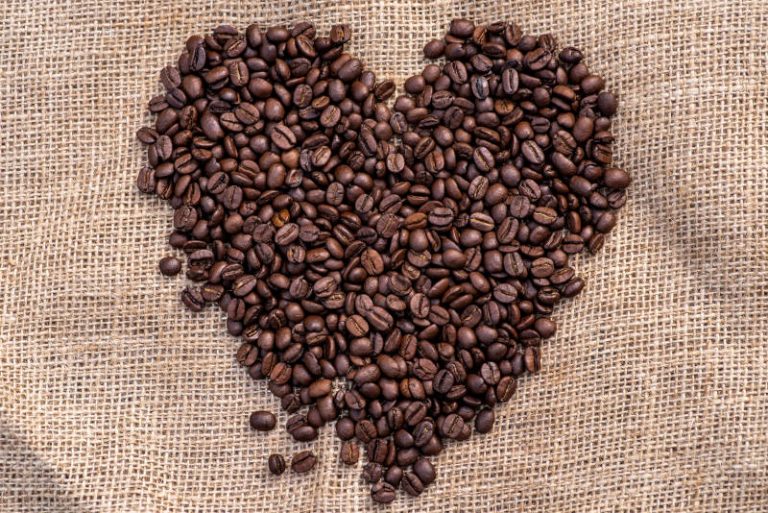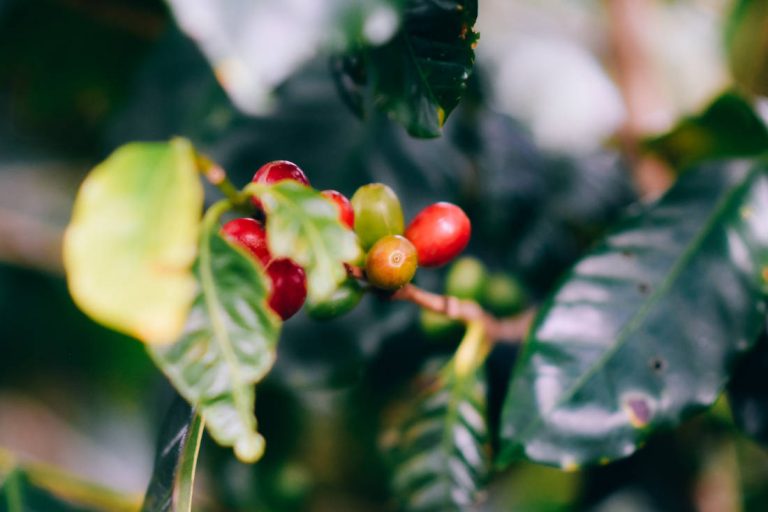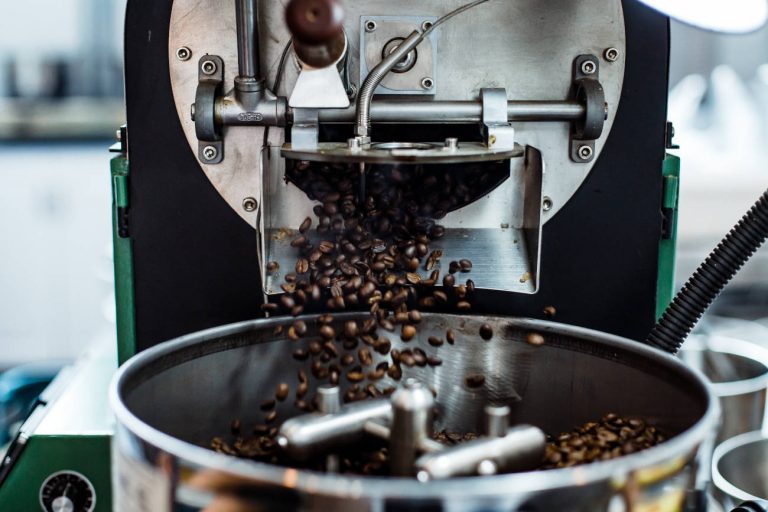Buy Kona Coffee From Hawaii in 2022 [Avoid Bad Copies]
Have You Tried Real Hawaiian Kona Coffee?
If you want to buy real Kona Coffee from Hawaii, we recommend that you get Mountain Thunder Private Reserve on Amazon. There are a lot of fake Kona-brands out there. Be sure to avoid them.
If you think of gourmet coffee, you probably think of the Arabica and Robusta blends from South America and Africa. Probably you don’t even know anything about the Arabica beans growing in the United States. And that’s a shame, since the beans are grown right in Hawaii. And they are grown on the biggest Hawaiian island. Kona is according to many one of the world’s best coffees. With low acidity it is very distinct when compared to other traditional blends.

The beans are grown in a unique location – on the west side of the Hawaiian island – and are not found anywhere else. The unique flavor comes from the volcanic soil, the sunshine and the tropical conditions.
Kona Coffee Best Deals
Kona coffee is somewhat mythical, can be really expensive, but is always highly prized by coffee drinkers. For Americans that do know about Kona coffee, it’s of course a point of nationalistic pride. And objectively IT IS truly a quality coffee. The labor rates in Hawaii are higher than in other coffee-growing countries. This, coupled with the high demand for this coffee, and a limited supply, makes Kona coffee more expensive than most other coffee beans.
Here are the best deals on REAL Kona Coffee Beans you can buy right now:
Mountain Thunder Whole Bean French Roast
This Mountain Thunder Private Reserve is a 100% real Kona Coffee. The beans are grown, processed and roasted in the Kona District on Hawaii. A lovely french roast.

Hawaiian Isles Kona Coffee Co. Ground Coffee
This is a really nice, top selling, blend from one of the most recognized coffee producers of Hawaii. It’s a well balanced medium roast. A classic Kona bean.

Farm-direct Kona Coffee Beans
A lovely dark roast directly from the coffee farm in Kona District, Hawaii. It’s an authentic, single coffee estate origin. You can’t be more sure than this of getting the real deal.

Peet’s Coffee Extra Fancy Kona Coffee Beans
If you want a great Kona Coffee experience, you should really try the single-estate, 100% Kona beans from master coffee roaster Peet’s Coffee. It’s a blend between beans graded Fancy and Extra fancy. This is my go-to Kona Coffee Bean supplier.

100% Hawaiian Kona Coffee, Extra Fancy
This is another 100% real Kona Coffee graded “Extra Fancy”, which is the highest grade. It is from Helios Coffee. A really nice bag of beans.

What is Kona Coffee?

Kona Coffee Beans are unique and complex in their flavors. They are low on acidity with a delicious aroma and rich spicyness. This is a unique flavor for the Kona bean. It was originally brought from Brazil to the Kona region. First, it was in the form of cuttings. To become a full crop, it actually took quite a while. Kona coffee started to be grown for commercial purposes in the 1800s. And has since been very popular.
Something happened in 1899 that changed Kona coffee for ever. The coffee markets of the world crashed. The owners of Kona plantations had to lease parts of their plantations to other individual farmers. Starting with just a couple of acres, these farmers began to run them as family businesses. These hard working farmers handcrafted a high quality coffee bean to sell.
Coffee from Koa Coffee Plantation

Some companies are selling Kona Blends. Avoid these. It can be a blend of different beans from around the world. If you order straight from a Koa Coffee Plantation, you’re sure it’s 100% Kona coffee. If you’re paying a premium price for a bag of coffee beans, make sure you get the real thing. Look on the package. It should state something like “100% Kona”. Go for the real deal, like this amazing medium roast blend from Royal Kona:

Why Is the Kona Coffee Bean So Special?
A lot of the labor are hand labor. The rocky slopes with its volcanic soil, make for an unusal ripening cycle of the bean. Workers have to inspect each bean individually. This is to make sure the unripe ones are not picked before their time.
So, the high quality of the Kona coffee bean is due to both the individual farmers and their competence, and the growing conditions of the island. Today you’ll find about 600 farms producing the Kona beans. The total annual volume is around two million pounds. When you taste the rich and spicy flavor of Kona, you’ll remember that experience forever.
Testing Kona Coffees
I was given a small amount of an Espresso Roast. I decided to taste it and review it. I was really surprised. Every sip was as I had expected from a Kona coffee. So smooth, so delicious and so rich. Well balanced and worked black as well as with milk. If you want a nice Kona Espresso Roast, try the one from Mountain Thunder.
Mountain Thunder Kona Coffee Espresso Roast

Kona Single Estate Coffee Peaberry Beans
The other sample I got was a small bag of Kona Peaberry beans. I tried them as an espresso. And it was delicious.

Kona Unroasted Green Bean Coffee
I also received two different bags of unroasted green coffee. The first was a sample of Kona Extra Fancy. These beans are carefully sorted. When you look at the bag of unroasted beans, you can actually see that. I roasted a small portion myself and let them rest for about two days.
From Big Island Coffee Roasters you can get a bag of unroasted green coffee beans.

The Verdict of My Kona Coffee Test
I made the first cups with my Aeropress, and the coffee was great – smooth and delicious – like you would expect from Kona. After that I blended them with my house espresso and had a nice cup of black coffee.
The day after I had two cappas completely made of Kona. And I must say, it would be easy to become i complete Kona devotee. It is hard to beat the smoothness and richness.
The second bag of unroasted beans I roasted, was the one from Big Island Coffee Roasters. I am sipping a cup right now as I am writing this review. And it’s taking me longer than expected to finish these sentences. The beans are so great brewed in the Aeropress.
Flavored Kona Coffee
To make the great flavored Kona coffees, only real and pure ingredients are used. Right after the beans been roasted, the right amount of all-natural flavors are added. And there are so many great flavors to explore! Exotic french vanilla bean, chocolate that’s really rich in its taste, macadamia from Hawaii and of course the favourite, hazelnut.
Hawaiian Macadamia Kona Coffee
This is one of the top selling Kona Blend Brands in the United States. And this delicious macadamia tasting coffee is 100% Hawaiian. The buttery-rich, yet delicate and slightly sweet taste of macadamia, is such an exotic taste of Hawaii in your cup.

Royal Kona Toasted Coconut Flavored Coffee
If you want the real Kona experience, you should try Royal Kona. Here with a tasty toasted coconut flavor. It feels like a day at the beach sipping this coffee.

Royal Kona Coffee Vanilla Macadamia Coffee Capsules
Light-roasted tasty vanilla macadamia Kona coffee capsules, in the most convenient possible way: a coffee pod. K-Cup compatible.

Chocolate Flavored Kona Coffee
From Kona Roasting Company comes this grounded Chocolate Flavored Coffee Blend. From the same roaster you’ll find other flavors as well.

Kona Coffee K-Cups and Nespresso Compatible Pods
Sometimes you just want the best in the most convenient way. My favourite Kona Coffee capsule for a single serve is Royal Kona (se above). But there are loads more of Kona pods. And some you can save a lot of money on.
Kauai Coffee Single-serve Pods
This Hawaiian coffee pod is compatible with Keurig’s K-cup. A dark roast from the Na Pali Coast. Kauai is Hawaii’s Largest Coffee Grower.

Kauai Coffee Pods Medium Roast
Kauai also serve a balanced medium roast. This one is also compatible with the Keurig capsule system.

Maud’s Kona Coffee Blend
Roasted in San Diego, these recyclable pods are compatible with almost all modern coffee capsule machines.

Kona Coffee History
“The ride through the district of Kona to Kealakekua Bay took us through the famous coffee section. I think Kona has a richer flavor than any other, be it grown where it may and call it what name you please.”
MARK TWAIN, 1865
Coffee Comes To Hawaii
The first time coffee was planted in Hawaii was in 1813. The first plantage ws on the island of Oahu. Imagine, this was only 35 years after the first modern westerner, Captain Cook, came to these islands. Unfortunately the plantings were unsuccessful.
It was missionary Samuel Ruggles that planted the first coffee in Kona back in 1828. He took his cuttings from the arabica trees formerly planted on Oahu. And here, with its rich volcanic soil and its perfect climate, the coffee plantagen thrived.
Present Day Kona
Only some places in the world have conditions that are “Just Perfect” for growing coffee beans. The South Kona Coast offers the coffee plant just what it needs. Rich volcanic soil, perfect temperatures, very little wind, sunny mornings and cloudy, rainy afternoons. These conditions make the Kona coffee plants produce one of the most sought after coffee beans in the world.
With almost 700 farms producing Kona coffee, most all the farm related work has to be done by hand. The steep and rocky terrain of Kona does not lend itself well to mechanical cultivation or harvesting.By hand picking the coffee beans, you are assured that only the ripest finest berries will be in your cup of coffee.
Roasting Kona Coffee
Roasting coffee is a craft that should only be done by a professional roaster. The roaster must consider many elements of the coffee crop such as – bean size – moisture content – the heat of the roasting drum.
Because the beans go through a very intense chemical change where they lose anywhere from 16 – 21% of their weight, the roaster uses his or her experience and instinct to determine the precise moment to “drop” the roast.
We believe that having our coffee roasted by a professional allowes our Kona coffee to become the best it can possibly be.
100% Kona Coffee
As you drive south along the Kona Coast on the Big Island of Hawaii, you can’t help but smell the coffee roasting. That smell is the ” PRIDE OF THE KONA COFFEE FARMER”.
This is not like the Kona coffee you might find in your local super market. Most all of these are blended with other inferior coffees and only have to contain 10% Kona coffee. We believe that you can never experience the taste of Kona coffee unless it is 100% Kona Coffee.
Visiting a Kona Coffee Plantation
There are a lot of possibilities to actually go visit a Kona Plantation. There you can try different roasts, as well as dine and stay over.
Kona Coffee Lexicon
The language of the Hawaiian Kona Plantation are as rich and decadent as our coffee itself.
Discover what we mean when we talk of red cherries, kona bean parchment and kona snow, and gain understanding of the terms used behind the scenes as we bring you the world’s finest cup of coffee time and time again.
- Acidity: Flavorful acidity is the term used to describe the coffee component that adds the sparkle and zest to a cup of coffee. The best Kona Coffees have a sweet and delicate acidity.
- Aroma: It is the smell released by the cup as the coffee’s flavor elements break free of the coffee liquid’s surface after being combined with the hot water. The best coffees have a fine, clean, sweet, and strong aroma that will mirror the taste characteristics of the cup.
- Bean: Two flat seeds formed with the normal cherry
- Body: It is the mouth feel imparted by the natural oils contained in the coffee bean. It conveys a sensation of pleasant heaviness that gives an impression of thickness to the liquid.
- Cherry: The fruit of the coffee tree. It starts forming as green berries and changes color from yellow-orange to deep red, the only time to pick
- Drying: The beans are washed and laid out on decks and sun-dried. Mechanical drying may also be used to ensure the beans reach a consistent moisture level.
- Green: This is the coffee bean stage where the coffee has been wet-processed and later milled. It is the phase when the beans are ready to be roasted.
- Full City Roast: The beans are roasted deeper than a medium roast to bring out the maximum body without roasting out the specific characteristics inherit from the microclimate from where it is grown. We stop the roast at the beginning of the second crackle to produce beans that are chestnut brown with a slight shimmer of oils on the surface
- Kona Snow: White, sweet-smelling blossoms that cover the coffee trees at intervals from January through May.
- Milling: The stage where the stiff parchment skin and the thin silver-skin below it is removed. At this time, the coffee is sized, ready for state-certification.
- Parchment: After the stage when the outer red skin and flesh is removed and then dried. Parchment is the stiff white skin around the beans.
- Peaberry: When coffee cherries produce only one round seed instead of two flat ones.
- Pulping: Separating the beans from the outer red skin
- Roast: Heating the green beans to a desired color and taste. There are numerous types of roasts performed on the green beans such as medium, full city, or dark roast.
Header photo by Photo by Peter Vanosdall on Unsplash.

Coffee nerd from Toronto. Enjoys coffee before, during and after a nice meal. Engineer turned writer that started blogging at Wawee Coffee. And couldn’t stop.







